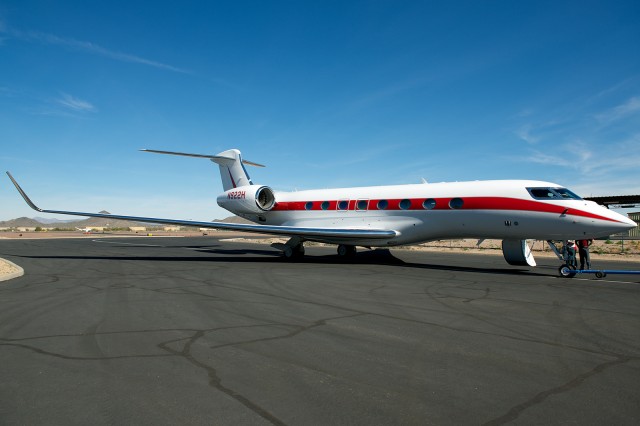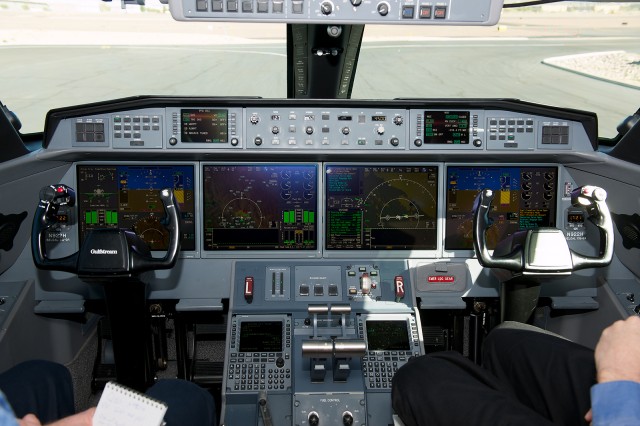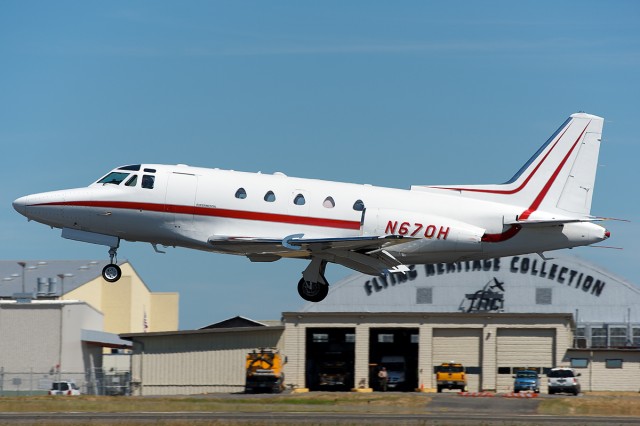
Honeywell Aerospace has a beautiful property – Photo: Bernie Leighton | AirlineReporter
After experiencing what it was like to fly on the Gulfstream G650, it was time to explore the engineering advancements Honeywell was developing at their Deer Valley lab.
What I was shown would put aviators that finished their careers even fifteen years ago in absolute awe.
Honeywell has a four-step approach to designing cockpit avionics:
- Give the pilot what they need
- Give the pilot only what they need
- Give the pilot the information only when they need it
- Give them the information in a way that is intuitive, unambiguous, and easy to understand

Primus Epic, called PlaneView on Gulfstreams is the current state-of-the-art-flight-deck – Photo: Bernie Leighton | AirlineReporter
The Primus Epic system on the G650 was designed with those four principles in mind. The positive response from flight crews has been overwhelming. Clearly the real-world use is matching up with the testing. This positive response has allowed Honeywell to go even further in their exploration of pilot-aircraft interface.

N670H was the first aircraft in the world to be certified with TCAS. Photo by Bernie Leighton | AirlineReporter.com
Recently I spent a day with Honeywell Aerospace and it had clearly worked its way into my brain at a deeper-than-expected level.
Before I found the opportunity to go over my notes and write a follow-up article about my time with the Honeywell Crash Test Dummies up at Paine Field, I found myself on board an American Airlines Boeing 737. My first thought, after it was clear that tower had given us a “taxi into position and hold” command for Runway 34R at SEA was, “I sure hope this aircraft has RAAS.”
Runway Awareness and Advisory System is a Honeywell Aerospace product that allows pilots to enhance their situational awareness by providing audible and visual cues about the aircraft’s location relative to its destined runway. Once the aircraft arrives on the runway, it is capable of reminding flight crew that they are still on the runway after one minute and thirty seconds. This time was decided on by Honeywell’s research team. After ninety seconds on the runway, research shows that the safe course of action is to make a radio call to the tower reminding them of your position and intent. That technology alone saves lives and prevents damage, but if you think Honeywell stopped there, you would be wrong.


